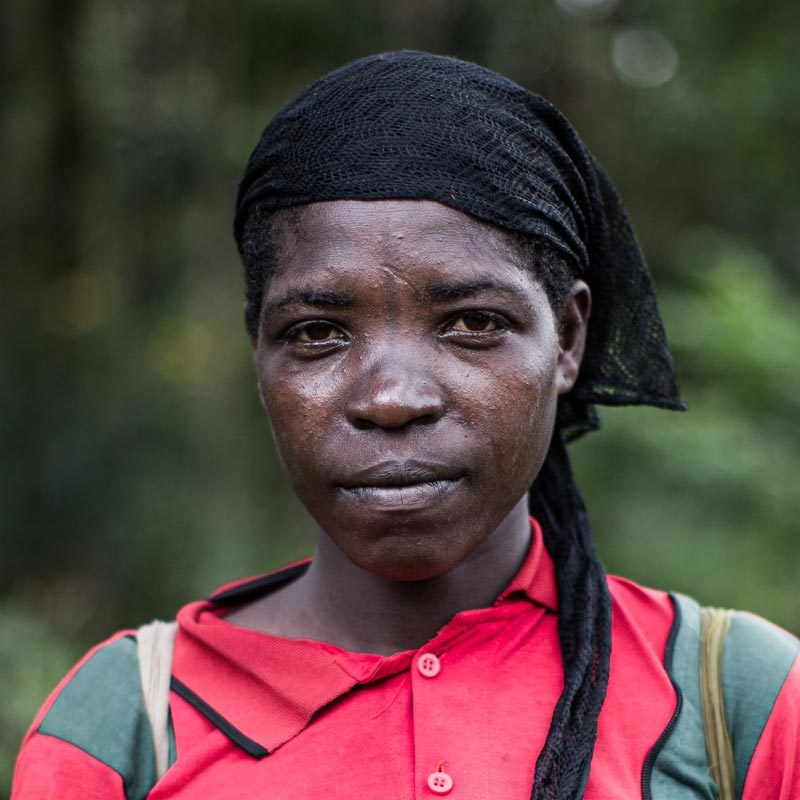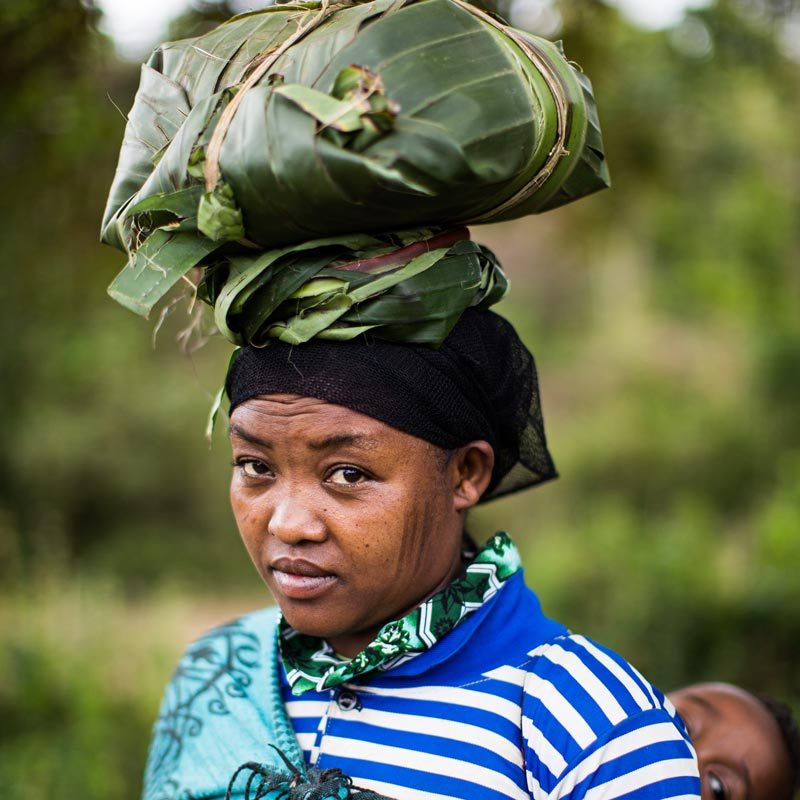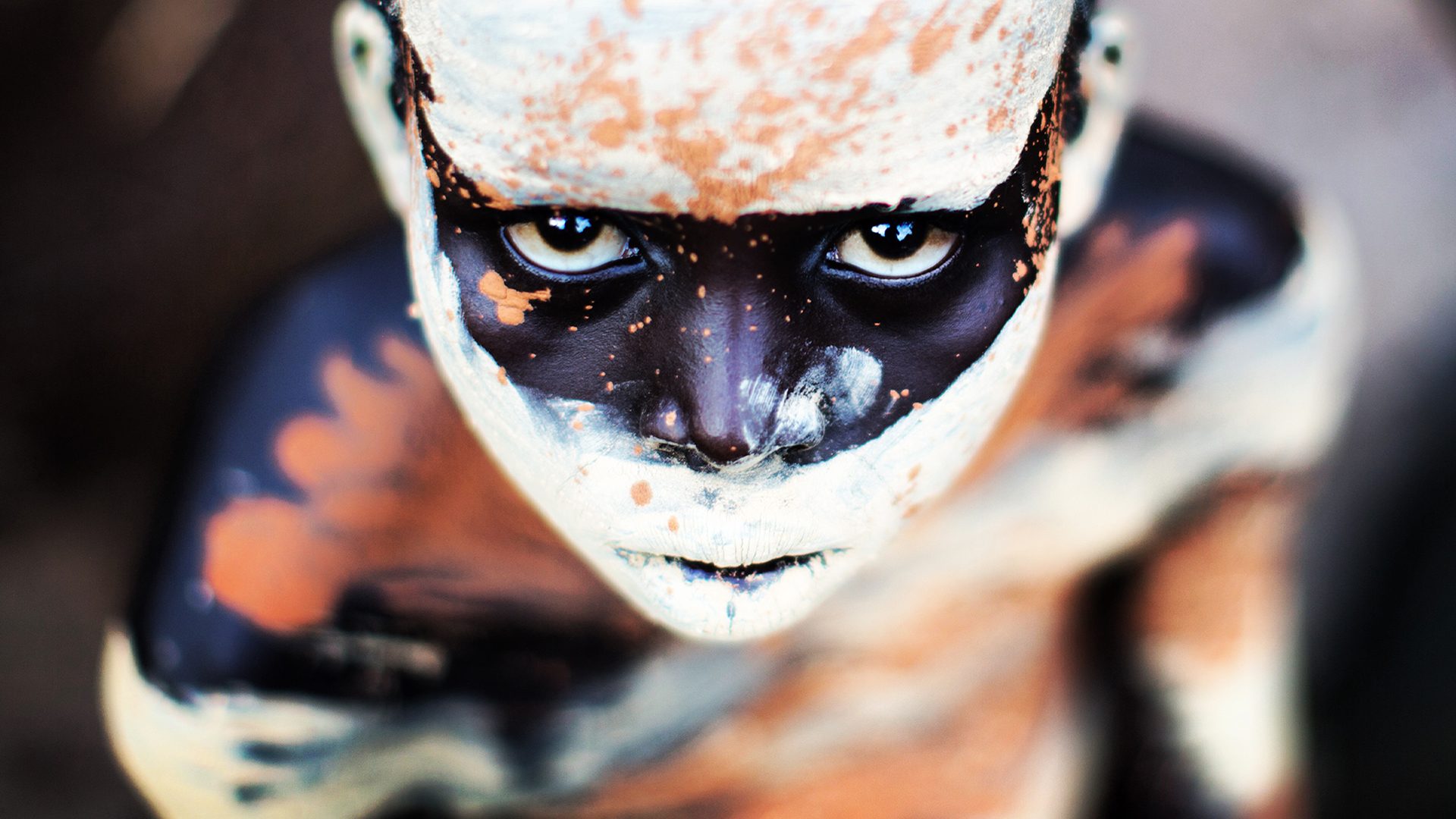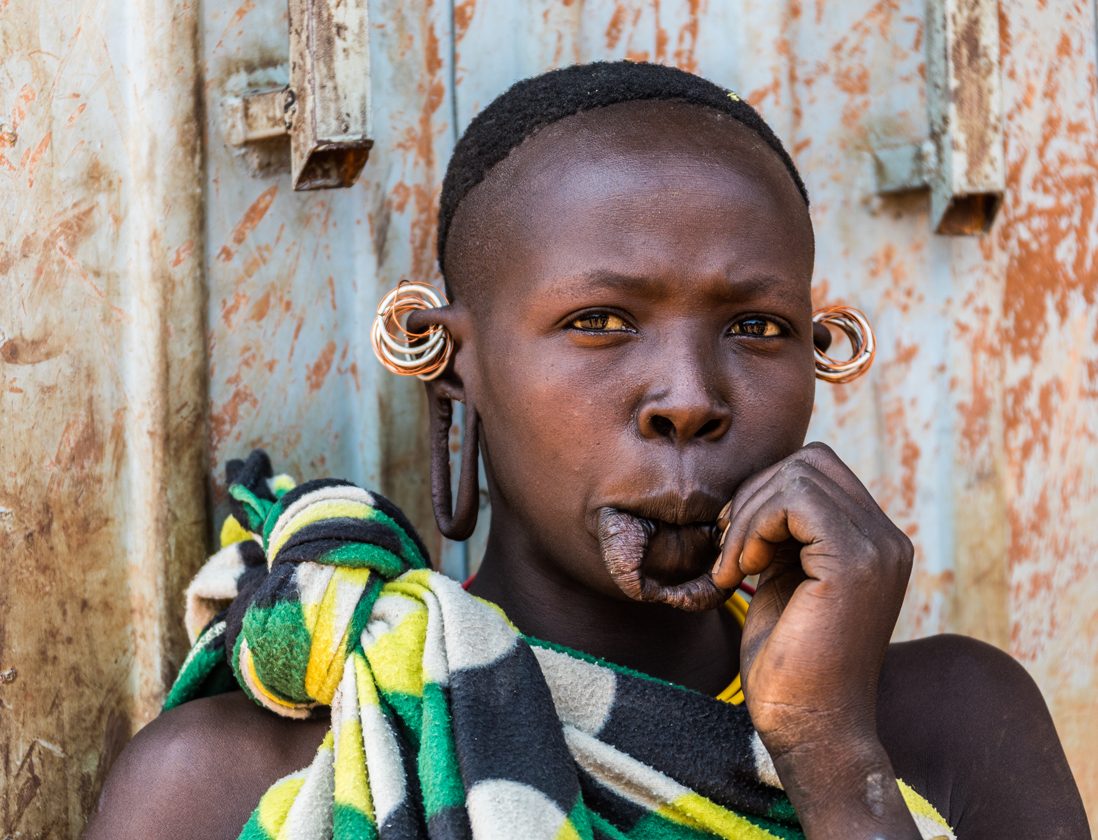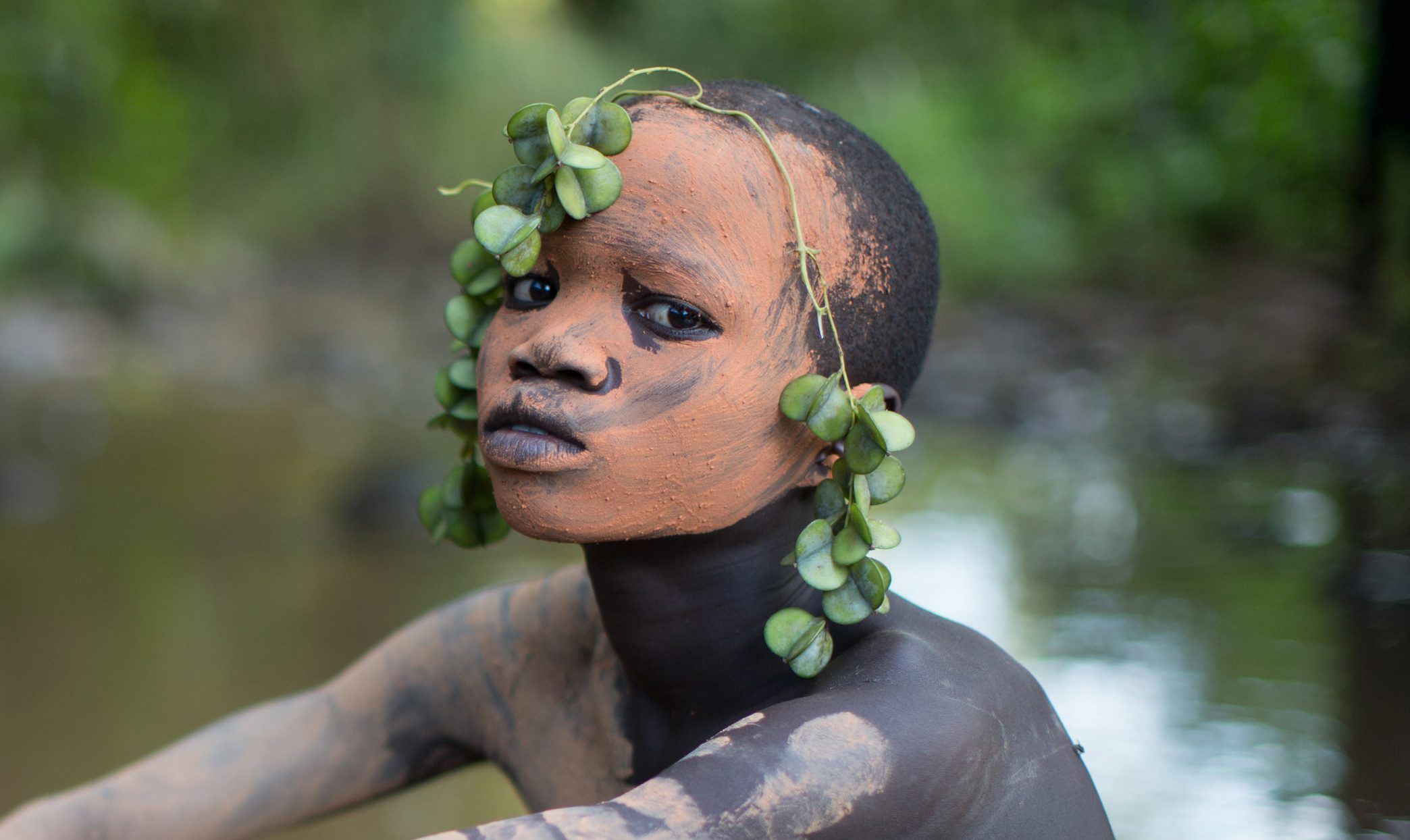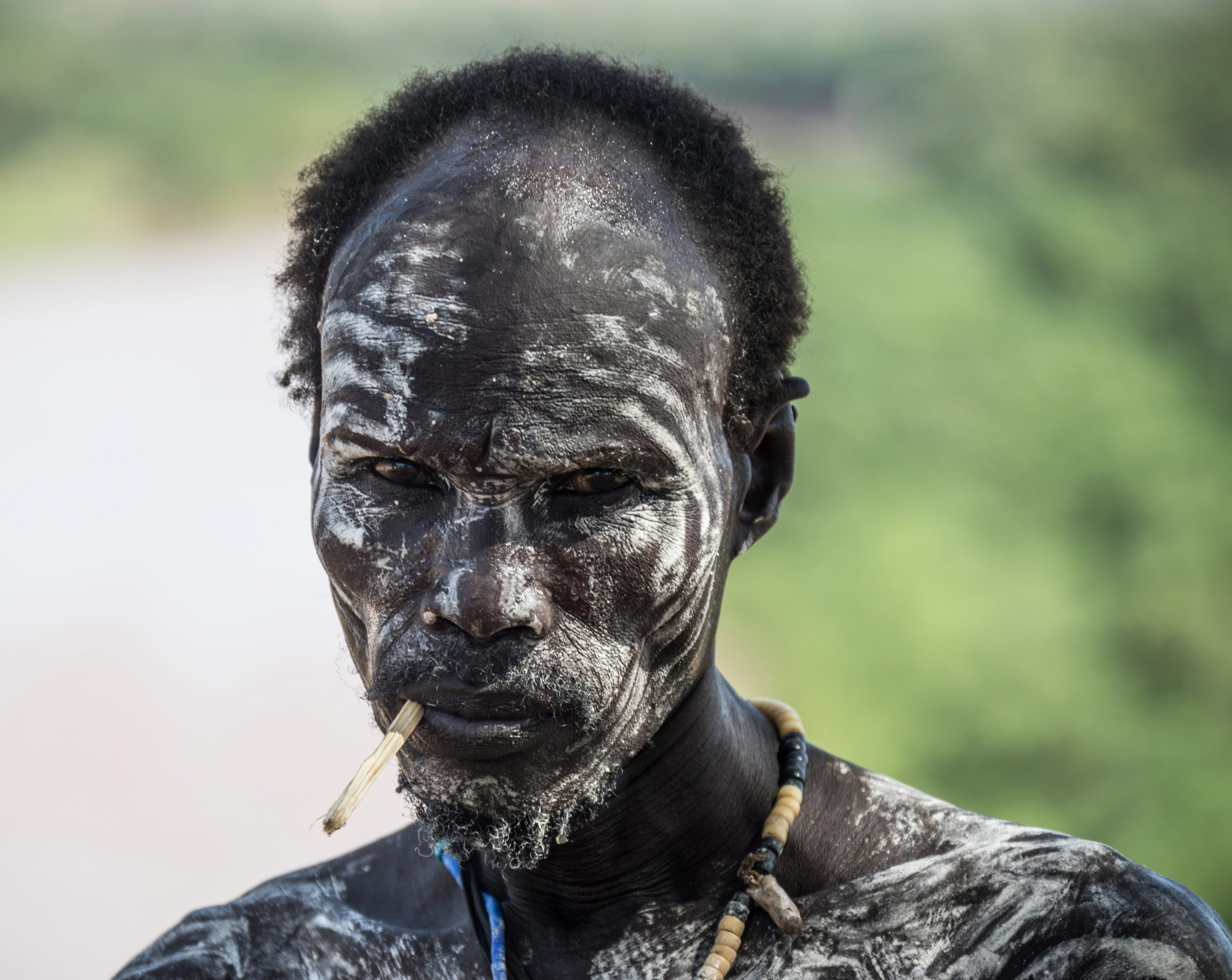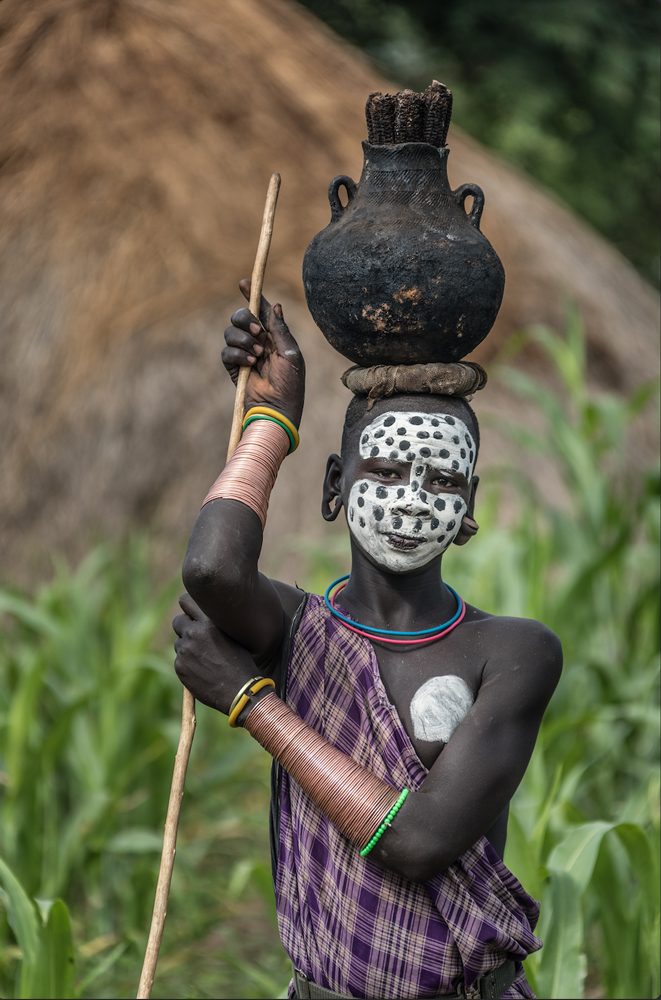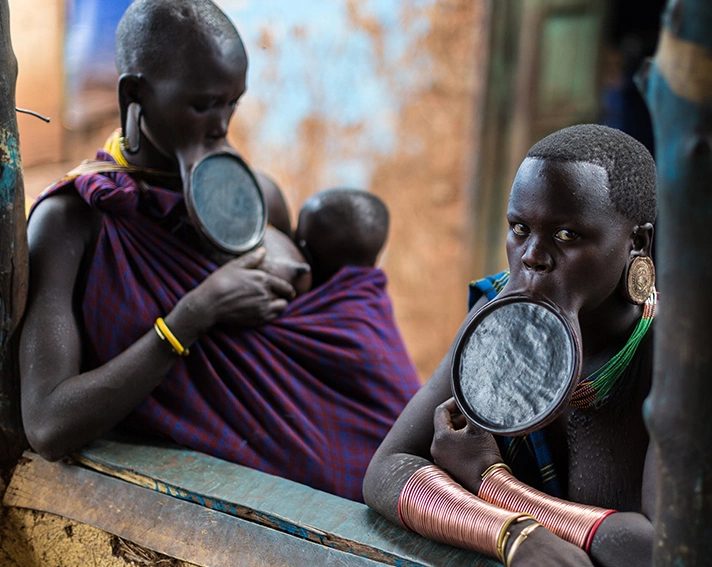"The cradle of Humanity", an incredible garden of cultures
In the Dorze Mountains and the Omo Valley you can find the highest concentration of diverse ethnic groups in Ethiopia. The resistance to the Italian colonization and the natural refuge that constitutes its geographic surroundings provided to the groups of the zone an isolation with respect to the western influence. These conditions have given rise to a small oasis with a rich cultural diversity.
Surma ethnic group
This semi-nomadic people live in the jungles of southwestern Ethiopia, on the pristine bank of the mythical Omo River and along the border with South Sudan. The Surma are mainly pastoralist, but to a lesser extent, they also cultivate. They make a special alcoholic beverage, similar to beer, from fermented sorghum. They keep much of their traditional culture alive. Both Surma men and women love body decorations and nakedness, which in the past played an intimidating role on their enemies. We will see the fascinating aesthetics of labial and lobar dilations: those majestic plates up to 40 centimeters in diameter. In addition, we will witness how they adorn their bodies through scarifications, paintings and striking metal bracelets.
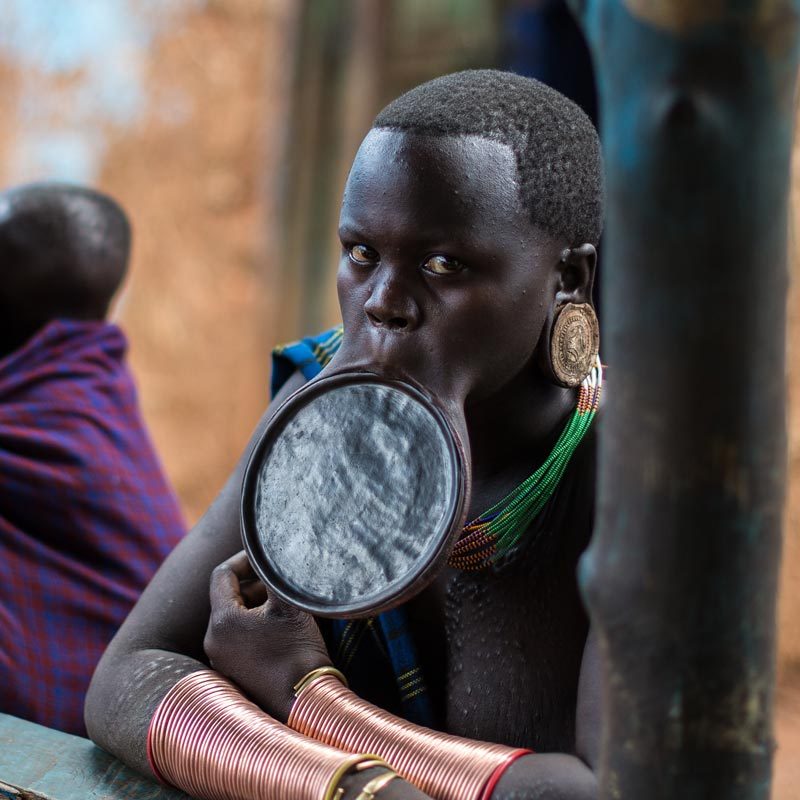
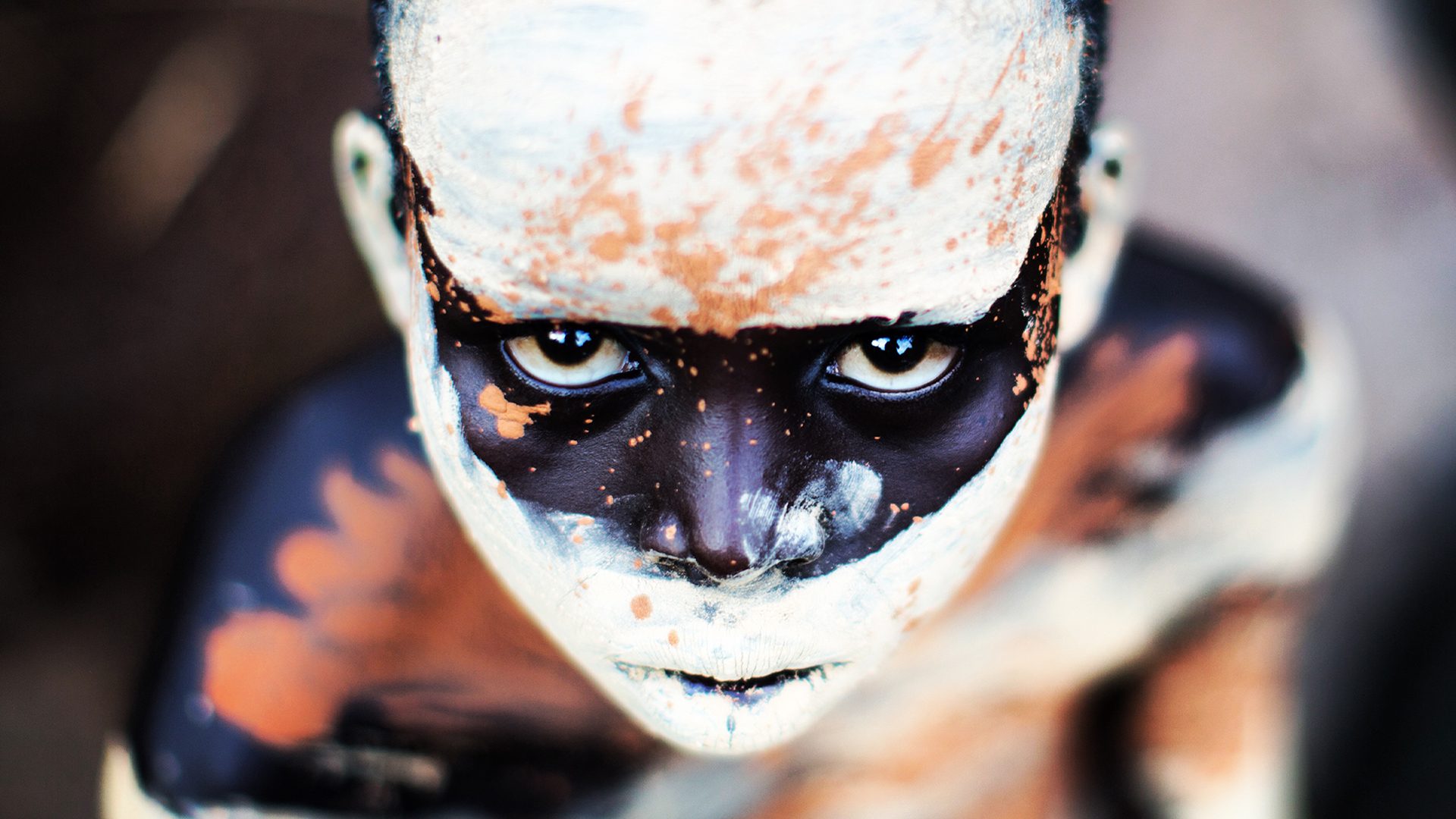
Dizi ethnic group
The Dizi are 35.000 people who live on subsistence farming in the highlands and grow, among other products, ensete, corn or barley. They also have cattle, goats and chicken and are beekeepers. They speak a dialect of Omotic and the majority of Dizi are animist but they are also influenced by Christianity.
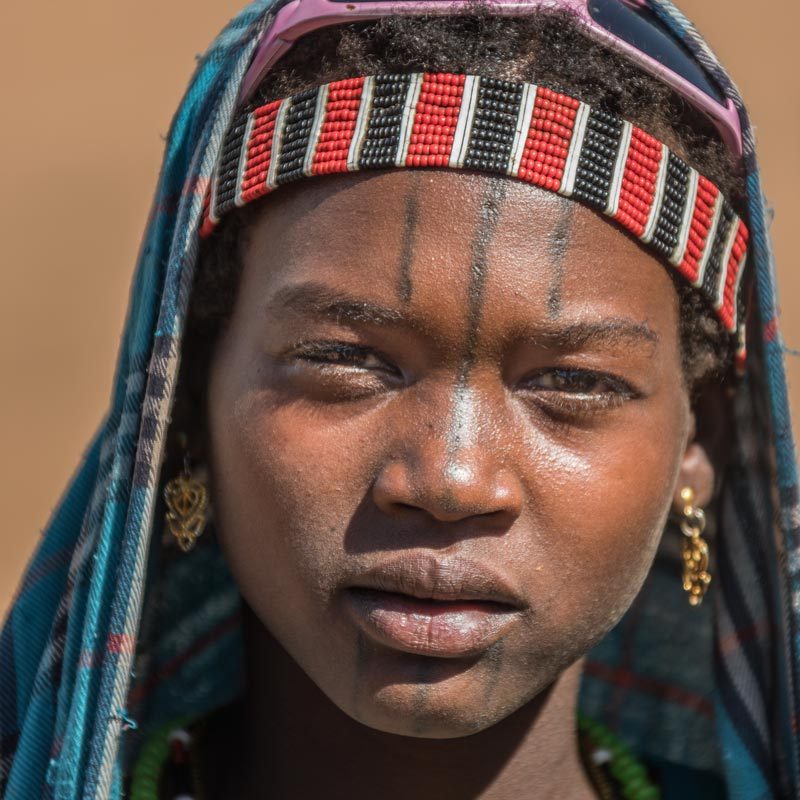

Menit ethnic group
The Menit live mainly around the Tum market- place, basically living a mountain lifestyle, which is based on farming and cattle. There is also a tradition of pottery making. They transport huge mud vessels from their villages to the markets in Maji or Tum, where they mainly sell them to the Dizi. The Menit speak Menit, belonging to the Nilo-Saharan group. The Menit and the Surma do not culturally mix, although they live close one another, but have a strong identity feeling which characterize them.
